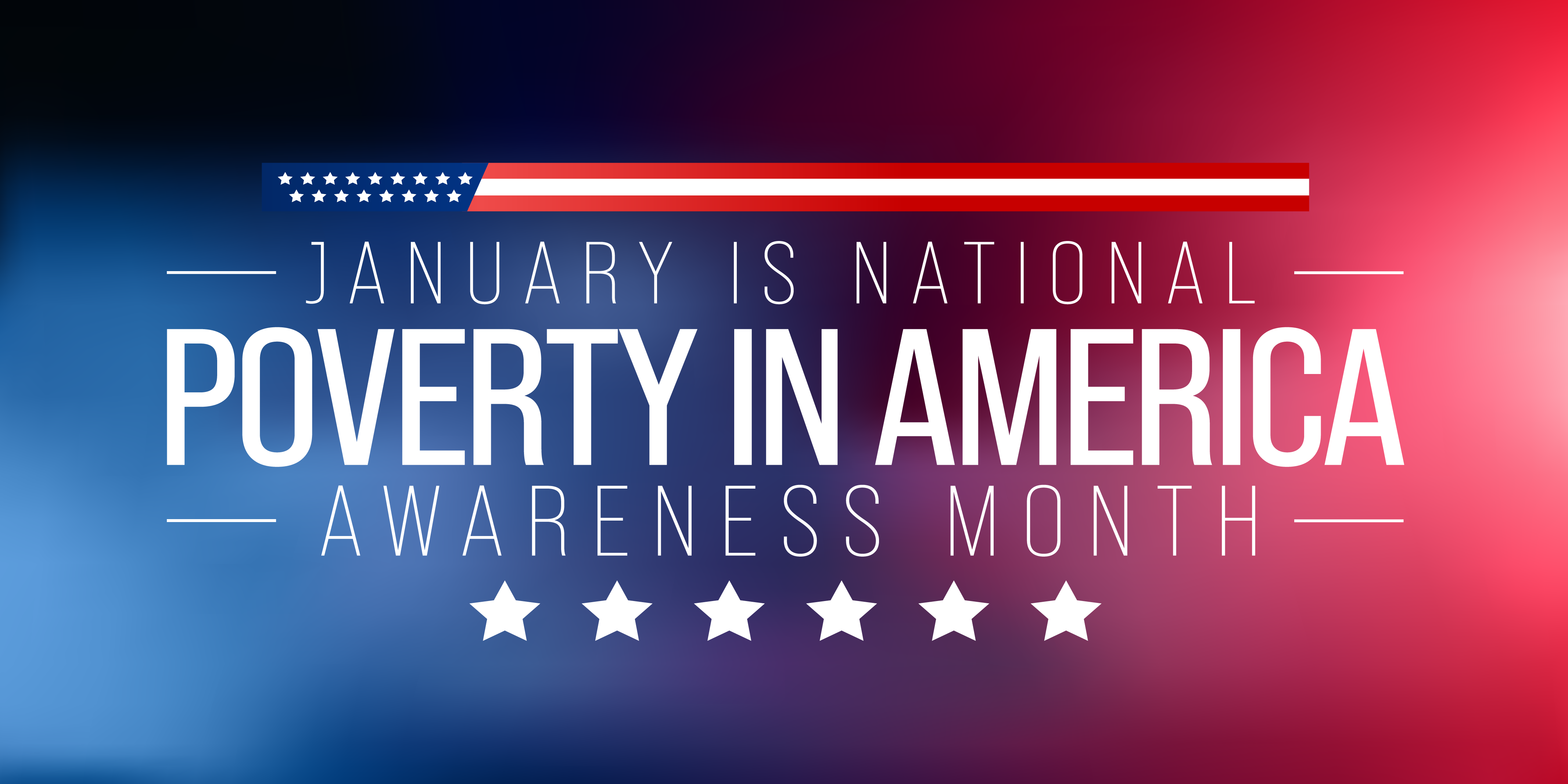
California, Texas, and Florida are humongous states by land mass and sheer population. Florida has 22 million residents, Texas has 29 million, and California holds 12% of the US population with 39 million residents!
But do you know what else is equally astounding? The US poverty rate.
The census reports that the official poverty rate in 2021 was 11.6%, which is 37.9 million people living in poverty. January is National Poverty in America Awareness Month, a month dedicated to spreading awareness, understanding, and perspective on the conditions and suffering of our fellow citizens and fellow humans globally.
There are different definitions of poverty throughout the world. For example, for a developing nation, it’s different and more severe because, in these locations, the priority is access to food, water, and shelter versus another area where those needs are met (to a degree), so access to education and adequate healthcare would be included – versus another area that may also include the ability to afford medication or a family or medical emergency as the mark of living at or below the poverty line.
A helpful definition from the United Nations states, “poverty is the inability of having choices and opportunities, a violation of human dignity.”
That’s a powerful distinction. “Choices and opportunities” means someone is living in pure survival mode without the ability to have an actual hand in the decision-making and trajectory of their and their family’s lives – living at the will of whatever is available. This makes adequately clothing, housing, feeding, and caring for yourself and your family extremely difficult to nearly impossible.
Although poverty in this abject sense seems too far removed from many of us, the numbers prove that we either have a family member, friend, or coworker or know of someone living in these challenging conditions. Another key statistic to consider is that many of us are actually closer to this poverty line than we may be aware of or like to this.
What is close?
- According to recent reports, 63% of Americans are living paycheck to paycheck and what’s surprising is that this includes nearly half of the six-figure earners.
- Depending on what reports you read, anywhere between 47 to 68% of Americans couldn’t afford a $500 to $1,000 emergency, either entirely or they’d have to use credit cards or savings.
With persistent inflation, the number of Americans living paycheck to paycheck is near a historic high.
Poverty is not only heartbreaking; it has had a severe and damaging impact on those who experience it. Poverty, homelessness, and being food insecure lead to higher mortality, violence and crime, mental health struggles (depression, suicidality, anxiety, PTSD, trauma), declining physical health, poor performance in school, substance abuse, and much more.
Poverty is an enormous fight, and although we cannot eradicate it individually, we can make ourselves more aware and cultivate a culture of empathy and care. We can still help win this fight. We can volunteer time or donate to charities and organizations that support homelessness and access to healthy food and clean water. We can use our vote to endorse measures and politicians prioritizing poverty, affordability, and access to life’s essential needs. And if we are doing well and have information and insight, teaching others about financial literacy, providing opportunities to others, or being an advocate spreading awareness are all things we can do to help our fellow people.
As Nelson Mandela said in 2005 in his now famous speech at the Make Poverty History rally in London.
“Overcoming poverty is not a gesture of charity. It is the protection of a fundamental human right, the right to dignity and a decent life.”
![Mortgage Investors Group in [Dynamic1]](../assets/images/mortgage-investors-group.svg)


